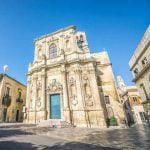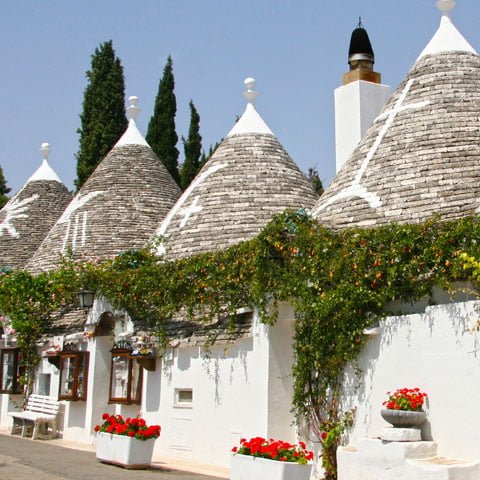On the southeastern part of the boot of Italy, sits the lovely city of Lecce. The city is one of the best kept secrets of the country, and those who visit it are captivated by its allure and quintessential Italian charm. The beauty of Lecce is not only found in its fascinating architecture and culture, but also in its authentic traditional cuisine.
Situated on the Salento Peninsula, the Mediterranean weather of the region is a primary contributor to flourishing olive groves and vineyards. Locally made olive oil is an ingredient for most dishes in Lecce. One of the most popular locally made olive oils is Terra d’Otranto.
As part of the Salento culinary tradition, Lecce’s fare embraces the “cucina povera” (food of the poor) tradition, with cuisine that is simple, flavorful, and crafted with quality ingredients. Commonly used ingredients include cultivated and wild vegetables, bread, local herbs (sage, rosemary, thyme, marjoram, oregano, and mint), fresh fish, pasta, and cheese. Meat is largely absent from the local cuisine since historically the locals could only afford choice cuts of meat during special occasions. No matter the ingredients, meals here are prepared with great care that is evident in the dishes’ appearance and every savory bite.
Because of the love put into these culinary delights, diners are encouraged by locals to take their time and enjoy the entire dining experience, with meals consisting of appetizers, a first course, a second course, side dishes, and dessert. The whole meal can take up to two hours or more. That said, there are some small plate options and quicker food options available in Lecce that are not offered elsewhere in Italy. However you choose to dine, slow the pace of your meal long enough to truly enjoy the cuisine and people of Lecce.
APPETIZER
Bread and the various forms of it are a large part of Lecce’s appetizers. Frisa, is a locally made hard, crusty bread that is baked twice. Like all breads made in Lecce and the surrounding area, frisa has a darker color due to the fact that it is made with less refined flours. It is traditionally served with tomatoes, oregano, extra virgin olive oil, and salt. Other toppings include garlic (which is only lightly rubbed onto the surface of the frisa), chili pepper, or cucumber.
Popular throughout the Salento area, pizzo leccese is a large, lumpy roll somewhat resembling a dark biscuit that is filled with savory local ingredients such as tomatoes, onions, black olives, peppers, zucchini, and more. The dish originated with the local farmers who would eat pizzo leccese while working in the fields. Today, pizzo leccese may be enjoyed as an appetizer, snack, or as an accompaniment to other local dishes.
Pittule are delicious fritters typically enjoyed during the Feast of the Immaculate Conception and Christmastime. Best served with a glass of local wine, pittule can be made in different variations such as a plain version (flour, water, salt, and yeast) or pizzaiola style (tomato, onion, olives, capers). Other common ingredients include salted anchovies, salt cod, and broccoli rabe.
A local flatbread that can be enjoyed in different parts of the Salento area is called pitta di patate. This hearty baked dish features two layers of potato-based dough made with cheese, breadcrumbs and eggs. The flatbread is stuffed with a variety of ingredients including cheese, sauteed onions, tomato sauce, olives, capers, vegetables, or seafood.
A seafood dish known as scapece can be enjoyed in many of Italy’s coastal regions and islands. In Lecce, the dish is prepared during the Feast Day of Sant’Oronzo, Lecce’s patron saint. Small fish called “pupiddi” are fried and then marinated with vinegar-soaked breadcrumbs and saffron. While marinating, the ingredients are placed in special wood tubs. This characteristically yellow dish was borrowed from nearby Gallipoli and is an iconic part of the local cuisine.
As in many other areas of Italy, the city frequently features local cheeses during the appetizer course. Due to the abundance of local sheep and goats, most local cheeses are made from sheep’s milk or goat’s milk. A popular summer cheese is cacioricotta, which can be served fresh or aged for a few months. During the winter months, pecorino and ricotta prevail. Another specialty called Ricotta forte is a creamy cheese made from fermented ricotta that is commonly spread on bread.
Local cheeses are typically served with extra olive oil and one of the many varieties of bread native to Apulia. Another common pairing would be taralli, which are ring-shaped crackers that are enjoyed throughout Apulia and much of Southern Italy. The dough used to make taralli may be flavored with numerous ingredients, such as fennel seeds, onions, chili pepper, or rosemary.
FIRST COURSE
Like the local bread, pasta in Lecce and the Salento area is made using minimally refined grains, giving it a darker color compared to pasta in other parts of Italy.
The most traditional pasta dish in all of Salento is without a doubt ciceri e tria. The dish is made with a local type of handmade pasta known as tria. Though it resembles tagliatelle, this pasta shape is made without eggs and is wider than tagliatelle. Tria’s shape is often irregular and the dough is usually made from whole wheat flour, though barley and farro flour may be added. In order to make ciceri e tria, some of the tria is fried in olive oil, while another portion is boiled. Chickpeas are slowly cooked with onions, celery, and carrots then served with the tria.
Another favorite pasta shape is called sagne ‘ncannulate. This dish consists of a long and wide twisty pasta in the shape of a ringlet. It is generally served with tomato sauce and cacioricotta cheese in the spring and summer, while in the winter it is usually topped with pecorino or ricotta. Another local cheese, ricotta forte, which has a much stronger flavor, may accompany this pasta as well. Alternatively, the pasta can be served with mudicca, or breadcrumbs fried in olive oil.
One of the most characteristic pasta shapes in Apulia is called orecchiette. This small pasta is known for its unique shape which resembles little ears. Traditionally made by hand, orecchiette are usually served with cima di rapa, or broccoli rabe. This dish is fabulous when served with a generous helping of local cheese. Orecchiette may also be served with other ingredients such as mussels, white beans, and ricotta forte.
Another popular pasta shape is known as minchiareddi or maccaruni. This fresh pasta is made by hand with barley flour. The pasta is shaped around a special metal rod with thin hollow tubes of pasta as the end result. Minchiareddi is one of the few pasta shapes served with meat in Salento. The traditional pairing is a tomato sauce with goat or lamb meat. Alternatively, the pasta can also be served with broccoli rabe and anchovies.
An ancient pasta shape enjoyed throughout Southern Italy is called millefanti. This variety of pasta is popular in Lecce as well, but here the locals call it triddhi. This miniscule pasta is made from a dough of durum wheat, egg, grated cheese, parsley, pepper, and nutmeg. To shape the pasta, the dough is pinched by hand, resulting in a crumbly consistency. Traditionally, triddhi pasta is cooked and served in beef broth.
One of the few non-pasta-based first course dishes commonly enjoyed in Lecce and the Salento area is muersi fritti. The hearty dish was historically prepared by farmers in the morning before they went to work in the fields. The dish is meant to recycle leftover ingredients and is made with legumes (often chickpeas), broccoli rabe, chili pepper, and fried stale bread.
SECOND COURSE
As mentioned above, meat is rarer in this part of Italy, with the exception of lamb and goat. One lamb-based dish enjoyed in Lecce is known as turcinieddhri. The dish is popular throughout Southern Italy, and in Lecce it is made using rolled lamb offal.
Because of Lecce’s proximity to the Adriatic Sea, fresh seafood and fish are served and prepared in a variety of ways for second course dishes. Oily fish are common throughout the area as are mollusks and crustaceans. Among the most popular local fish are mackerel, hake, mullet, common seabream, common pandora, blotched picarel, and bogue.
One common seafood dish is lu purpu alla pignata, which consists of braised octopus. Scapece, mentioned above in the appetizer section, may be enjoyed during the second course as well. Salt cod is common in the winter and is often served with pasta. Mussels are favored among the locals and one common dish, which is also enjoyed in other parts of Southern Italy, is impepata di cozze (mussels steamed with freshly ground black pepper and served with lemon and parsley).
As in some parts of Italy, horsemeat is a local delicacy and is served usually in the form of pezzetti di cavallo al sugo, a stew comprised of braised horsemeat, tomato sauce, onion, celery, carrot, black pepper, and chili pepper.
However, not all second courses are based on animal protein. One popular dish is fave e cicoria, which is mashed fava beans served with chicory greens. This relatively simple dish that is a nod to the city’s eastern influences usually consists solely of four ingredients: fava beans, chicory greens, salt, and extra virgin olive oil.
Paparine infuocate is a dish unique to Salento and unlike any other in Italy. To make it, young poppy plants are sauteed in olive oil with garlic cloves, chili pepper, and black olives. The dish is best enjoyed with a nice glass of locally made wine.
SIDE DISHES
Local side dishes are plant-based and feature seasonal vegetables as well as other staple ingredients such as bread. Pizzo leccese, described above in the appetizer section, may be served as a side dish as well.
One side dish beloved by the locals is pomodorini scattarisciati. The dish features local cherry tomatoes cooked in olive oil with onion, garlic, and chili pepper. The tomatoes are cooked until they burst, forming a delicious sauce that may be paired with vegetables, meats, or spread on frisa.
STREET FOOD
As you walk along the streets of Lecce, especially in the evening hours, a number of vendors typically offer several kinds of street food to passersby.
One of the most popular finds amongst locals and visitors alike is rustico leccesse. This light and fluffy savory pastry treat is circular in shape and is stuffed with fresh tomato, black pepper, mozzarella, and béchamel. This pastry is best enjoyed when warm and the cheese is still delightfully gooey.
A similar, yet different, offering is the classic calzone, which can be enjoyed throughout Southern Italy. Known for its characteristic half-moon shape, the handheld calzones served in Lecce can be fried or baked and are traditionally filled with mozzarella and tomato. In other parts of Salento they may be called panzerotti and can feature a variety of savory and sweet fillings in addition to the classic mozzarella and tomato.
Another popular street food is known as puccia, which can be made soft or crunchy. Regardless of the variety that is made, puccia is always baked in a wood oven. This local sandwich consists of hollowed bread that is filled with cured meats and cheeses or other local specialties such as horse stew. This tasty sandwich has a long history and was originally invented by local farms to provide sustenance during long workdays.
DESSERT
Pasticiotto is a sinfully decadent dessert in Lecce. The pastry looks like a cross between a mini pie and a muffin and is traditionally filled with a flavored pastry cream of which lemon and chocolate are favorites. Invented during the eighteenth century, the pasticiotto has become a symbol of Lecce’s cuisine and is best enjoyed warm.
Fruttone is a local variation of pasticiotto. Instead of cream, these pastries are filled with almond paste and marmalade. Almond paste in particular is a common ingredient in desserts from the Salento area. While the filling is simply delicious, the crowning glory of this dessert is the thin layer of dark chocolate that sits on top.
Almonds are a key ingredient in another dessert called cupeta. To make cupeta, a mixture of almonds and caramel is spread on a slab of marble. The mixture is shaped into sticks and allowed to solidify. Once available only during Christmastime, cupeta can now be enjoyed all year round.
This part of Apulia is also home to mustazzoli, which are delicious almond cookies. Flavored with various spices, such as cinnamon, cloves, and nutmeg, these tasty cookies are covered with a rich chocolate glaze. It is believed that these cookies date back either to the period of Saracen raids or to the Ancient World.
The Salento area has a strong coffee tradition that is a fundamental part of the local cuisine. There are several local coffee specialties, but the most beloved is the summer treat called caffè in ghiaccio. This coffee consists of espresso that, after being sweetened with sugar to one’s liking, is poured into a glass filled with ice. Locals often replace the sugar with almond milk for extra flavor.
WINE
The Mediterranean climate of the area lends itself to flourishing vineyards that yield exceptional grapes for wine making. No meal is complete without a glass of fine Italian-made wine. Several wines made in the province of Lecce that are popular here include the reds Galatina Negroamaro, Salice Salentino, and Matino, as well as the whites Leverano bianco and Salice Salentino bianco.
The food of Lecce is delicious in its own right, but the dining experience is even more beautiful thanks to its surroundings, particularly in the evening when the city is lit up and filled with people strolling through the area.
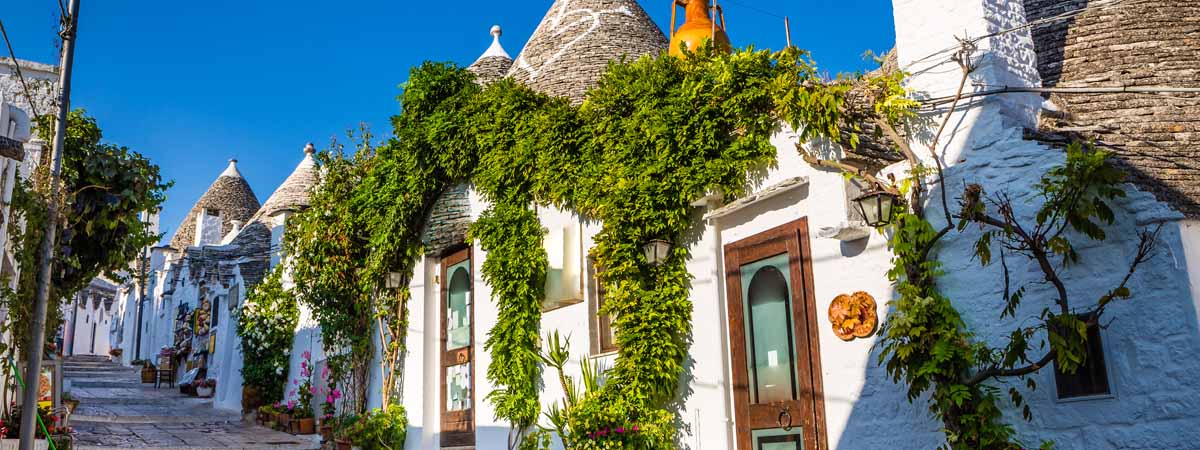
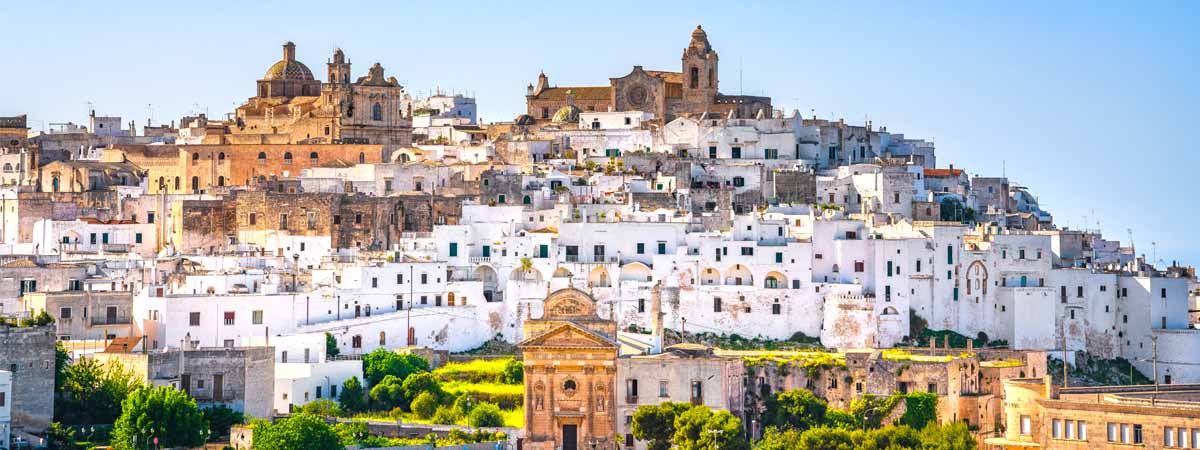
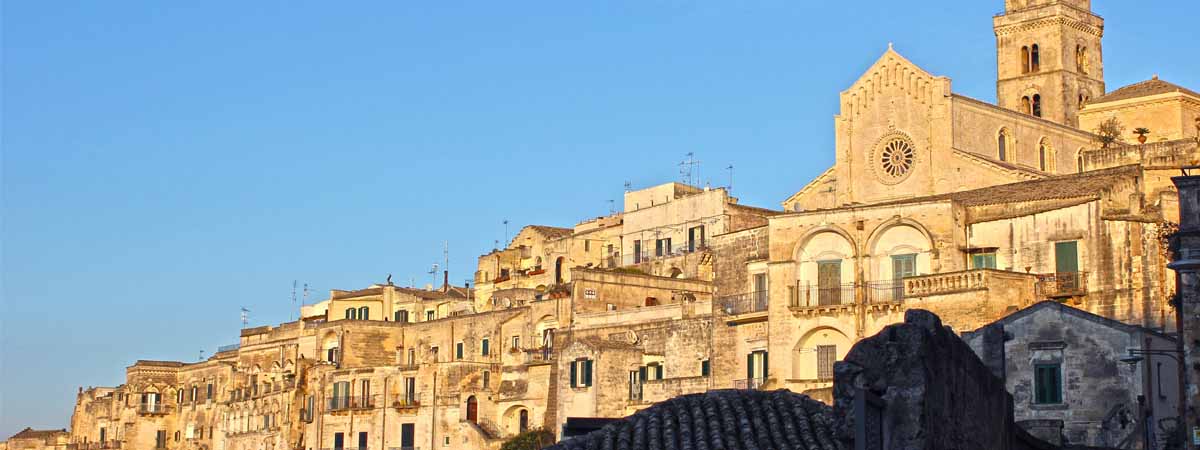

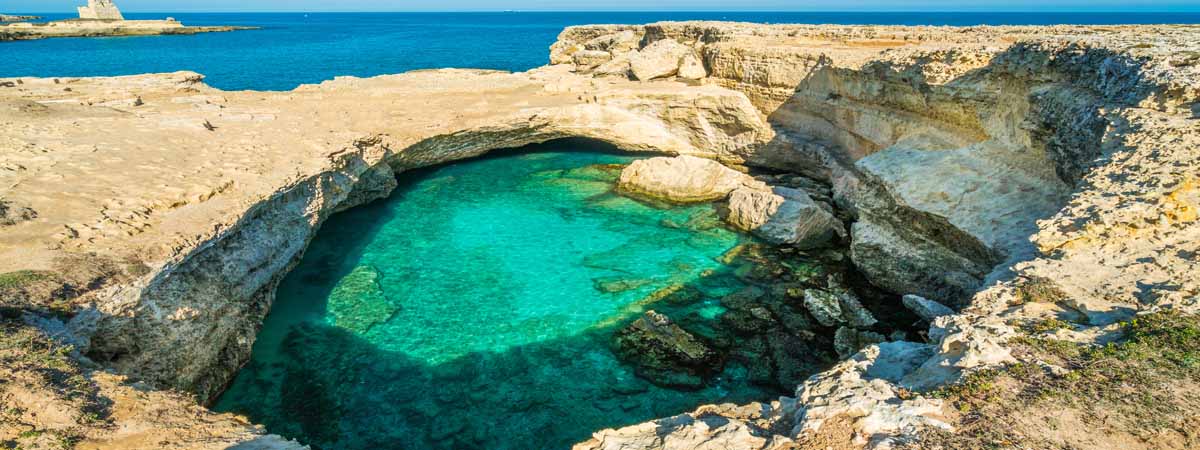
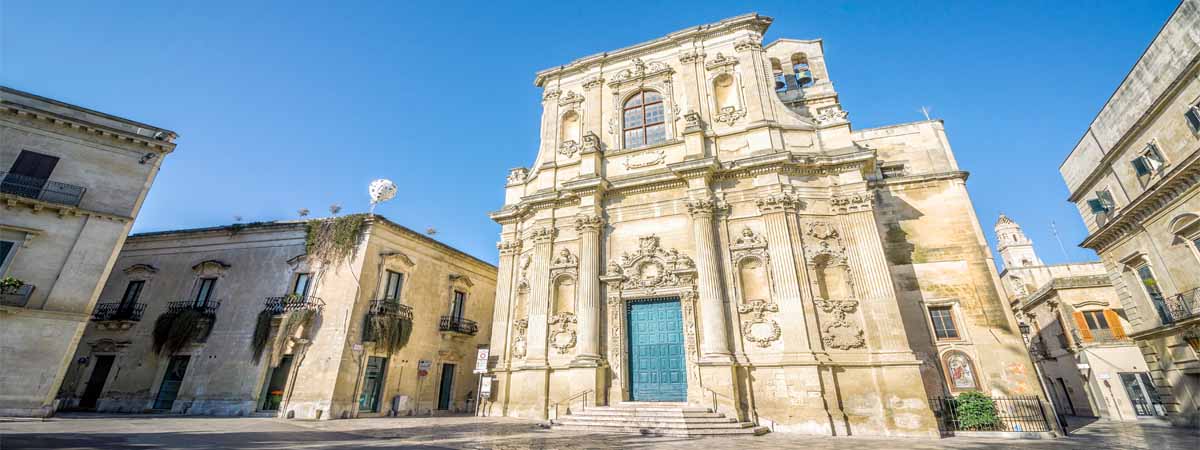
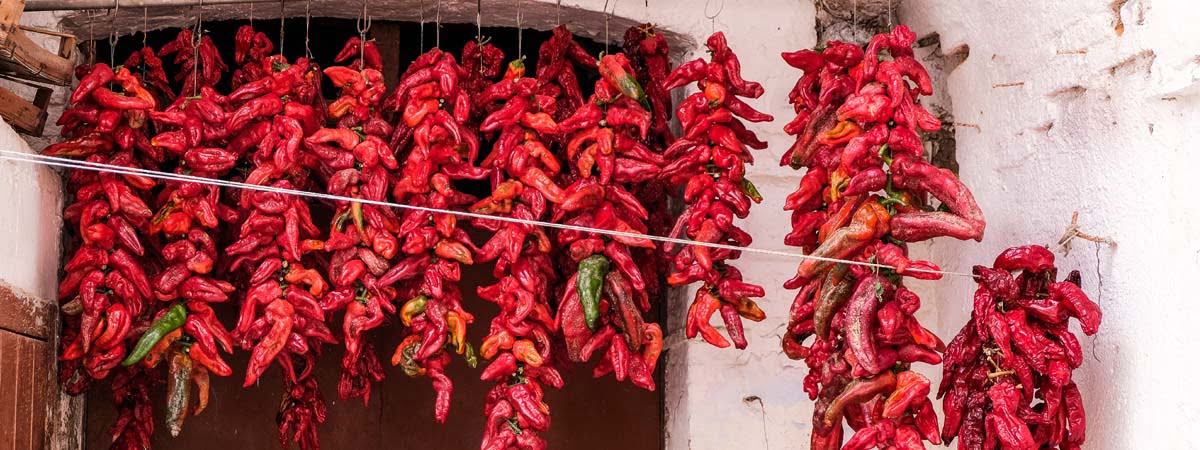
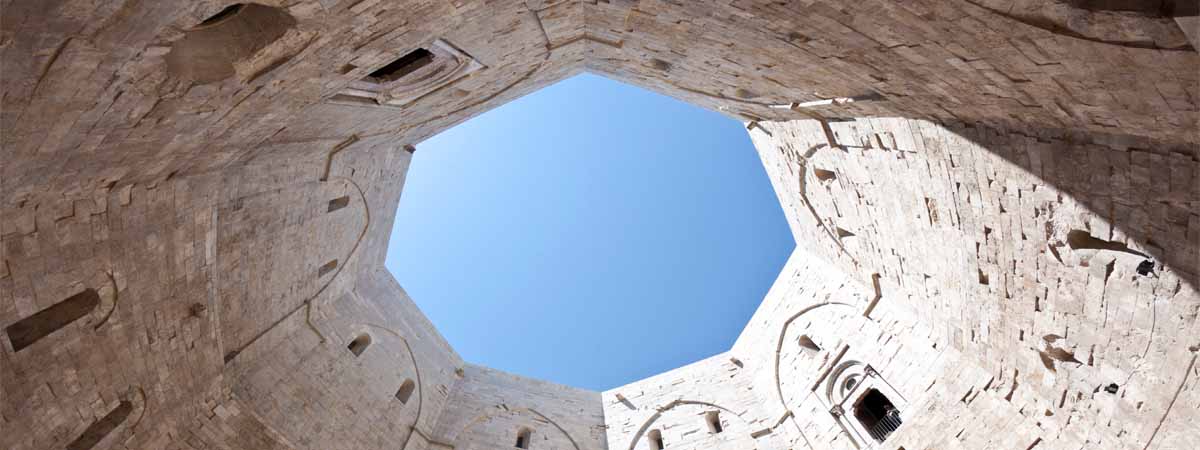

Travel Guides


